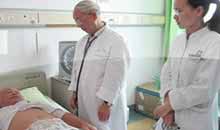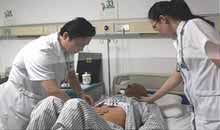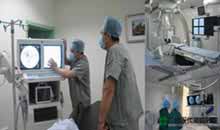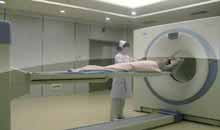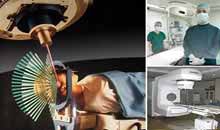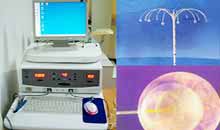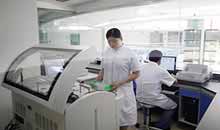- Basic
- Symptoms
- Diagnosis
- Treatments
What is Pancreatic Cancer?
The pancreas has both functions of endocrine secretion and exocrine secretion. Cancer that starts in the endocrine cells is called neuroendocrine tumor, by which Steve Jobs has been killed. Neuroendocrine tumor is not very common and with low degree of malignancy but long course of disease and its treatment is quite different from other common pancreatic cancers. Cancer that starts in the exocrine cells is the commonly known pancreatic cancer. It is a cancer with high degree of malignancy.
The worldwide incidence of pancreatic cancer is in a rising trend. It mostly happens among mid-aged and old people with a higher percentage among males than females. The high risk age of pancreatic cancer is from 40 to 65, with a tendency to become younger. Pancreatic cancer has high degree of malignancy. Averagely, there is only 5-month survival after diagnosis, while in a whole, 5-year survival only accounts for 5%. Thus, pancreatic cancer gains its name “king of cancer”. Only 15%-20% patients can be treated with surgery, among which 40% of them are detected with transfusion and their survival rate after surgery is 10% only.
Causes of Pancreatic Cancer
About the risk factors of pancreatic cancer, there is no clear explanation yet. However, as the researches process, many factors are found related to pancreatic cancer, including:
1. Smoking: people who smoke have more than 3 times risk as high as those who do not smoke.
2. Diet containing high protein, fat, calories: both famous Italian tenor Luciano Pavarotti and Hong Kong artist Shen Dianxia died of pancreatic cancer due to their diet high in protein, fat and calories.
3. Diabetes: diabetes patients are in high risk of pancreatic cancer.
4. Chronic pancreatitis: Chronic pancreatitis can develop into pancreatic cancer
High Risk Group of Pancreatic Cancer
1. People who are more than 40 years old, obese, and with unhealthy life habit, for example, frequent smoking and drinking and like diet high in protein, fat and calories.
2. Symptoms like having diarrhea once take in fatty foods, especially with oil on stools, probably indicate that the exocrine secretion function of the pancreas has been damaged.
3. Youths without family history are unexpectedly attacked by diabetes. That may be a sign of pancreatic cancer. For diabetes patients with a history of more than 5 years, their risk of pancreatic cancer is 1.2 times as high as that of normal people.
Pancreatic Cancer Screening
Generally, people with suspect of having pancreatic cancer should take non-invasive examination methods as the first choice for screening, for example, serologic tumor marker tests and stool sample tests. For those who are suspected with pancreatic cancer, diagnostic examination of pancreatic cancer should be performed.
Staging of Pancreatic Cancer
Stage 1: Cancer only can be found in the pancreas, 5-year average survival rate is about 30%
Stage 2: Cancer invades only the nearby tissues, for example, duodenal wall, 5-year average survival rate is about 10%
Stage 3: Regional lymph node metastasis occurs, mean survival time is 8-12 months.
Stage 4: Liver and other distant metastasis occur, mean survival time is 3-6 months.
Nursing of Pancreatic Cancer
Mental nursing:
1. Establish confidence of defeating disease and keep an optimistic attitude.
2. Join a rehabilitation group and adjust both mental and physical condition
Life nursing:
1. Pay attention to keep a proper dietary structure
2. Take Chinese medicine treatment for rehabilitation and combine Chinese medicine with other therapies to strengthen the treatment effect.
3. Regular recheck.
What kinds of supports can be obtained?
Study proved that a muti-disciplinary medical group, which is composed of surgical oncology, medical oncology, department of traditional Chinese medicine, pathology department, department of radiology, anesthetist and professional nurses, can make a more effective, more suitable and more economical treatment plan so as to improve the effect of cancer treatment.
Modern Cancer Hospital Guangzhou, with its multi-disciplinary “one-stop” medical system, offers comprehensive diagnosis and treatment service to patients. It not only offers patients with all-round considerate medical service, but also improves the medical efficiency and level without increasing patient’s burden. Communication channels between patients and doctors are various, which include online consultation, email, on-phone communication and face-to-face communication. All these communication channels allow patients to enjoy the service of consultation and help them fight against cancers. Medical groups that services patients include doctors, nurses, dietitians and interpreters, by whom all levels of needs of patients from different countries can be met. Under this smooth communication environment, patients can peacefully cooperate with the treatment.
pancreatic cancer is one of the malignant tumors in the digestive system with high incidence rate, but many patients do not know the symptoms of pancreatic cancer thus they cannot find the cancer in time, missing the best treatment time. Symptoms of pancreatic cancer in each stage differ, so any symptom should not be ignored and if the symptoms become significant, the cancer is very likely to be the advanced stage. Then what are the symptoms of pancreatic cancer?

Early Symptoms
There are no significant symptoms in the early stage.
Middle and Advanced Symptoms
1. Abdominal pain: it is more common in carcinoma of pancreatic body and carcinoma of pancreatic tail, usually occurring on the upper abdomen, navel around or right upper abdomen, manifested as gripping pain, intermittent or continuous, gradually aggravated dull pain. The pain intensifies when lying down and at night, but it will ease when sitting, standing, leaning forward or walking.
2. Loss of weight: approximately 90% of patients experience rapid and significant development of weight loss, while it will often be accompanied by dyscrasia in the advanced stage.
3. Jaundice: It may occur in middle and advanced stage. Jaundice is often continuous, gradually deepened. When tumor completely blocks bile ducts of the liver, stools lose their brown color, becoming a pale, clay color. Skin becomes yellow (brown or bronze), accompanied by itching.
4. Weakness and loss of appetite: they are relatively common and gastrointestinal symptoms such as nausea, bloating, and nausea can be accompanied. In some cases there may be steatorrhea and hyperglycemia (high blood sugar), glycosuria.
5. Some patients with pancreatic cancer may develop anxiety, depression, sleeplessness, personality change, etc.
6. Fever: it may occur in at least 10% of patients with middle and advanced pancreatic cancer and fever may be manifested as low heat, high fever, intermittent fever or irregular heat, which may be related to pyrogen released by cancer cell itself or secondary infection of biliary tract.
Experts from Modern Cancer Hospital Guangzhou remind you that if the symptoms mentioned occur, you should go to regular hospital for check and treatment at the first moment.
Due to its wide coverage and strong lethality, pancreatic cancer is of great harm to people. Experts point out that early diagnosis of pancreatic cancer is an important factor in determining the treatment effect. Therefore, it is necessary for us to learn about related pancreatic cancer diagnosis methods.

Diagnostic Methods of Pancreatic Cancer?
1. Ultrasound examination: Abdomen ultrasound is the preferred method for pancreatic cancer detection and diagnosis. It is easy to operate, harmless, non-radioactive and observable from multi-axial planes. Moreover, it can well reveal the internal structure of the pancreas and whether there is obstruction in the biliary tract, if any, site of the obstruction. On the other hand, it has the limitation of small field of vision and being easy to be affected by bodybuild and the gas within stomach and intestinal tract. In addition, it relies much on the operating doctor’s professional level, experience and notion, as well as the equipments. It is to a certain degree subjective, thus needs to be comprehensively considered whether to be combined with CT, MRI and laboratory examination.
2. CT: So far, CT is the best non-invasive imaging examination method for pancreatic cancer detection. It is mainly used in pancreatic cancer diagnosis and staging. Plain scanning can reveal the size and site of the lesion, but cannot accurately diagnose, nor can it help reveal its relation with surrounding structures. Strengthened scan can better reveal the size, site, shape, internal structure and their relation with surrounding construction. CT scans can more accurately determine whether there are liver transfusion and swollen lymph nodes.
CT scan is one of the increasingly widely used cancer examination methods in recent years. It can more accurately determine the texture and range of the cancer and has high value in cancer staging and treatment determination.
3. Magnetic Resonance Imaging (MRI) and Magnetic Resonance Cholangiopancreatography (MRCP): so far they are not recommended as the preferred methods for pancreatic cancer diagnosis. However, if the patient is allergic to contrast agent used to enhance the effect of CT scan, MRI can be used to replace CT in diagnosing and staging cancer clinically. Moreover, for those pathological changes whose characteristics are difficult to determine, MRI can be used on the basis of the CT examination to complement the shortcomings of CT imaging. MRCP has prominent advantage in determining whether there is obstruction in the biliary tract, if any, the site and reason of the obstruction. Compared with endoscopic retrograde cholangiopancreatography (ERCP) and Percutaneous Transhepatic Cholangiography (PTC), which are invasive, MRCP is safer.
what should you do once diagnosed with pancreatic cancer? How pancreatic cancer will be treated? Experts from Modern Cancer Hospital Guangzhou point out that if you are diagnosed with pancreatic cancer, don't be panic, firstly, you must know your own condition and then you need to actively cooperate with your doctor for treatment as soon as possible, so as not to miss the best treatment time. Therefore, what are the treatment options of pancreatic cancer?

The following we will introduce three common treatment options, hoping these can help you.
Surgery Treatment
Surgery is the most treatment option for pancreatic cancer, including pancreatoduodenectomy, extended pancreatoduodenectomy, and duodenum-preserving pancreatic head resection (DPPHR), and total pancreatectomy, etc. But as pancreatic cancer is very hard to be diagnosed early, the resection rate and survival rate after surgery are both low. As for patients with obstructive jaundice whose pancreatic cancer is not applicable to be resected, cholecystojejunostomy or cholangiojejunostomy can be chosen, so as to relieve jaundice and improve patient’s quality of life. Besides, endoscopic stent placement can be done to relieve obstruction.
Palliative Treatment
1.Indications of palliative surgery: it is important to the palliative treatment of pancreatic cancer. Due to local proliferation and metastasis of tumor, approximately 88% of patients with pancreatic cancer cannot be carried out radical surgery. When the primary tumor could not be resected, surgeon will take palliative measures to relieve biliary and duodenal obstruction. In addition, it also needs to combine with internal medical treatment to cope with jaundice, pain, weight loss, and pancreatic insufficiency, and even depression as well as organ failure. Surgical treatment is also needed when biliary stent or drainage failed, or obstruction and even cholangitis reoccurred after stent placement.
2.Methods of palliative surgery: as for the cases that are not applicable to radical surgery, generally cholecystojejunostomy will be used to dissolve obstructive jaundice. For those without suitable conditions, external fistula (gallbladder fistulation or external biliary drainage) can be done, thus most patients with pancreatic cancer can relieve from the symptoms within short term and improve their general health condition in order to gain average survival time of nearly half a year.
Comprehensive Treatment
Due to high level of malignancy, pancreatic cancer is with low resection rate and poor prognosis. Though surgery is still the prime treatment option, pancreatic cancer often is found late resulting from the loss of chance to treat, at this time, comprehensive treatment should be carried out. So far, the same as most of other tumors, there is still no a effective and applicable comprehensive treatment plan, which means that surgery is still primary while radiotherapy and chemotherapy are complementary, besides, new methods like immunotherapy and biological therapy are being discussed to be applied.
If you have any questions, please contact us via online consultation, email or phone call. If you find our website useful, please follow our FaceBook and YouTube, health information will be updated regularly.






